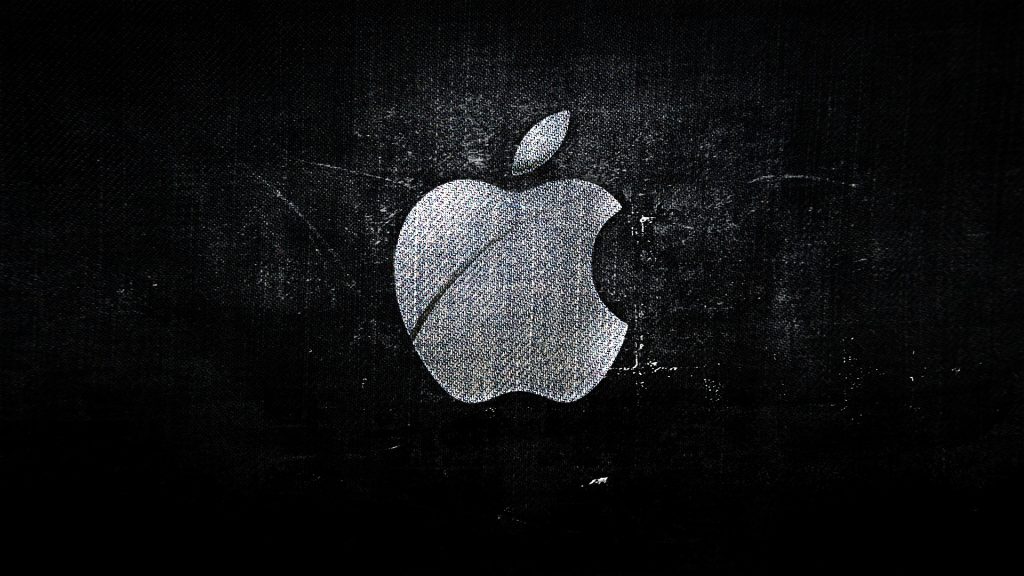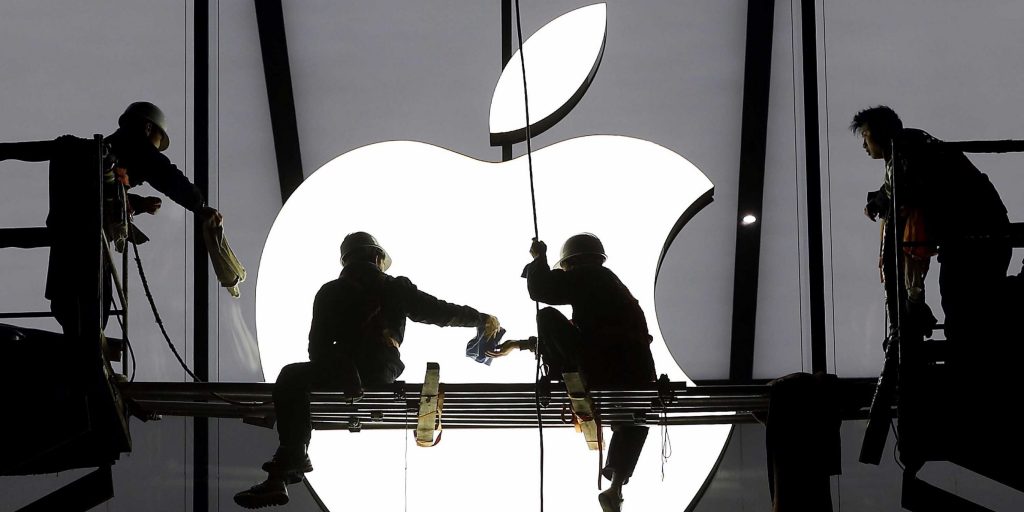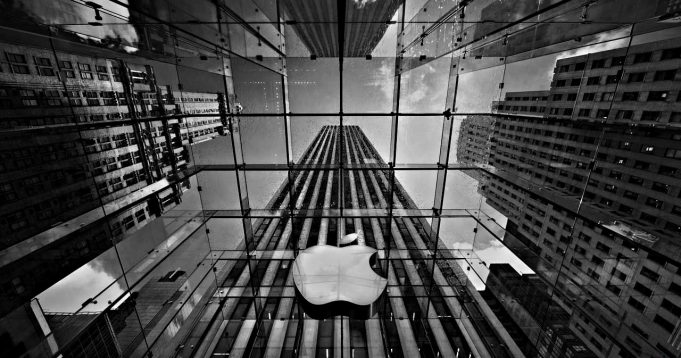This post is about how Apple makes money. Firstly, we explain the key elements of Apple business strategy. Then, we explain the key elements of Apple business model. Then, we share Apple product segment revenues and geographic segment revenues for the year FY 2015 (fiscal year ending September 2015). Then, we share the revenues, the profits, and the profit margins of Apple for FY 2015.
Key Elements Of Apple Business Model
Apple sells its products to consumers, small and mid-sized businesses, education, enterprise and government customers.
Apple products and services include iPhone, iPad, Mac, iPod, Apple Watch, Apple TV, a portfolio of consumer and professional software applications, iCloud, Apple Music, Apple Pay and a variety of accessory, service and support offerings. Apple generates revenues from product sales, subscription fees associated with iCloud and Apple Music, and extended warranty fees for its products.

- iPhone is the company’s line of smartphones. iPad is the company’s line of tablet products. iPhone and iPad run Apple iOS operating system.
- Mac is company’s line of personal and portable computers. Mac computers run on OS X operating system.
- iPod is the Company’s line of portable digital music and media players, which includes iPod touch, iPod nano, and iPod shuffle.
- Apple Watch is a personal electronic device that enables users to communicate in new ways from their wrist and track their health and fitness through activity and workout apps. Apple Watch runs on watchOS operating system.
- Apple TV connects to consumers’ TVs and enables them to access digital content (photos, videos, music, games) directly on their TVs. Apple TV runs on tvOS operating system.
- Apple application software includes iLife (iMovie, GarageBand), iWork (Numbers, Pages, Keynote), and various other software, including Final Cut Pro, Logic Pro X and FileMaker Pro.
- iCloud is the Apple’s cloud service which stores music, photos, contacts, calendars, mail, documents and more, keeping them up-to-date and available across multiple iOS devices, Mac and Windows personal computers, and Apple TV.
- AppleCare offers a range of support options for the company’s customers.
- Apple Pay is the company’s mobile payment service. It allows users to pay for purchases in stores accepting contactless payments and to pay for purchases within participating apps on qualifying devices.
- Apple Music is a subscription-based internet streaming service that also provides unlimited access to the Apple Music library.
Apple also generates revenues from the fees charged to content owners and developers for selling their digital content and applications through the iTunes Store, App Store, Mac App Store, iBooks Store, and Apple TV App Store.
- The iTunes Store, available for iOS devices, Mac and Windows personal computers and Apple TV, allows customers to purchase and download music and TV shows, rent or purchase movies and download free podcasts.
- The App Store, available for iOS devices, allows customers to discover and download apps and purchase in-app content.
- The Mac App Store, available for Mac computers, allows customers to discover, download and install Mac applications.
- The iBooks Store, available for iOS devices and Mac computers, features e-books from major and independent publishers.
- The Apple TV App Store provides customers access to apps and games specifically for the Apple TV.
The Company sells its products in most of its major markets through its retail and online stores and its direct sales force. In addition, the company sells a variety of third-party Apple compatible products, including application software and various accessories through its online and retail stores. The Company also employs a variety of indirect distribution channels, such as third-party cellular network carriers, wholesalers, retailers and value-added resellers. During 2015, the Company’s net sales through its direct and indirect distribution channels accounted for 26% and 74%, respectively, of total net sales.

Key Elements Of Apple Business Strategy
- FY 2001: $5 billion revenues. Net loss of $25 million.
- FY 2007: $24 billion revenues. Net profit of $3.5 billion.
- FY 2010: $65 billion revenues. Net profit of $14 billion.
- FY 2015: $234 billion revenues. Net profit of $53 billion.
Very few companies in the world would have witnessed such a growth in their revenues and profits. These numbers prove a simple point that how focus on few world-class products can change the fortune of a company. Apple launched iPod in October 2001, iPhone in June 2007, iPad in April 2010, and improved versions of these products almost every year. These three products have contributed to majority of the Apple revenues over the past years. The competitors are not able to catch up. Why is it so? Why are Apple competitors not able to grow their revenues and profits at a similar pace to that of Apple?
Apple has built a sustainable competitive advantage by focusing on three key business strategies: (1) Creating best user experience through vertically integrated model (2) Building platforms for content and apps distribution on Apple devices (3) Expanding the network of company-owned retail stores.
Apple Vertically Integrated Model
Apple focuses on providing the best user experience and owns it completely. Apple designs and develops own operating systems, hardware, application software, and services. Then, it integrates them seamlessly to build easy-to-use products. Apple is not dependent on its partners for any technical breakthroughs. Apple innovates at its own pace.
There are so many companies in the world that are good at building hardware or assembling components. But, building robust operating systems to run on that hardware is difficult. Even more difficult is creating developer communities that write applications for those operating systems. Other personal computer manufacturers or phone manufacturers find it hard to to beat Apple in that.
The product differentiation helps Apple maintain a premium pricing. When combined with a low cost sourcing and product assembly strategy, Apple is able to improve the business profit margins. The increased profits provide investments for research and development and marketing and advertising to develop and sell innovative products.
Apple Platforms For Content And Apps Distribution
Apple has created platforms for content owners and application developers to sell their content and apps respectively. Consumers access these platforms through Apple devices and pay to the content owners and application developers for the paid content and apps. Apple takes a fee from the content owners and developers because it owns and maintains the platforms that connect consumers with them.
These platforms are designed to induce cross-side network effects. As Apple customer base grows and more consumers access the platforms with their devices, the platform becomes more attractive to the application developers and the content owners. Similarly, a centralized access to the content and the certified apps attract more consumers towards the platform.
The devices and platforms help Apple lock-in the consumer into its ecosystem. First, Apple achieves hardware lock-in with the devices. Then, it achieves software lock-in with operating system software, application software, and third-party software and apps. Then, iCloud helps Apple achieve the data lock-in.

Apple Retail Store Strategy
To ensure a high-quality buying experience for its products, Apple continues to expand the number of its own retail stores worldwide. The stores are designed to simplify and enhance the presentation and marketing of the Apple products. The stores also offer a wide selection of third-party hardware, software, and other accessories that complement Apple products. The retail stores employ experienced and knowledgeable personnel who can provide advice, service, and training on Apple products. Apple retail stores are typically located at high-traffic locations in quality shopping malls and urban shopping districts. As of September 26, 2015, Apple had a total of 463 retail stores. 268 of those were in U.S. and 195 were in International locations.
Apple FY 2015 Products Revenues
Of the total revenues of $233.7 billion in FY’15, Apple generated
- $155.0 billion revenues, 66.3% of the total, from iPhone.
- $23.2 billion revenues, 9.9% of the total, from iPad.
- $25.5 billion revenues, 10.9% of the total, from Mac.
- $19.9 billion revenues, 8.5% of the total, from Services. Services includes revenue from the iTunes Store, App Store, Mac App Store, iBooks Store, Apple Music, AppleCare, Apple Pay, licensing and other services.
- $10.1 billion revenues, 4.3% of the total, from Other Products. Other Products includes sales of Apple TV, Apple Watch, Beats products, iPod and Apple-branded and third-party accessories.
Apple FY 2015 Geographic Segments Revenues
Of the total revenues of $233.7 billion in FY’15, Apple generated
- $93.9 billion revenues, 40.2% of the total, from the Americas segment. The Americas segment includes both North and South America.
- $50.3 billion revenues, 21.5% of the total, from the Europe segment. The Europe segment includes European countries, as well as India, the Middle East and Africa.
- $58.7 billion revenues, 25.1% of the total, from the Greater China segment. The Greater China segment includes China, Hong Kong and Taiwan.
- $15.7 billion revenues, 6.7% of the total, from Japan.
- $15.1 billion revenues, 6.5% of the total, from Rest of Asia Pacific segment. The Rest of Asia Pacific segment includes Australia and those Asian countries not included in the company’s other reportable operating segments.

Apple FY 2015 Revenues, Profits, and Profit Margins
Of the $233.7 billion of Apple total net sales in FY’15, $140.1 billion were the cost of sales. This resulted in $93.6 billion of gross profit and a gross margin of 40.1%. Apple other operating expenses were $22.4 billion. These include research and development expenses, and selling, general, and administrative expenses. This resulted in $71.2 billion of operating income and an operating margin of 30.5%. After interest and other non-operating income and expenses and income taxes, Apple had a net income of $53.4 billion and a net margin of 22.8%.









